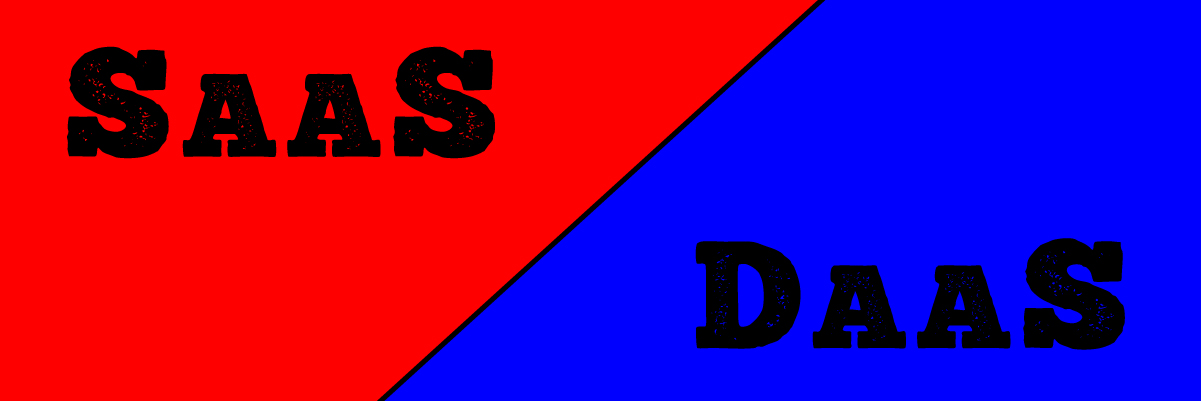Learn the Fundamentals
After the inception of the cloud in the world of technology in 2006, we saw a rise in the number of providers delivering ascendable, on-demand customizable applications for personal and professional needs. Identified nowadays as cloud computing, in most basic terms it is the delivery of IT services through the Internet including software, servers, networking, and data storage. These service providers differentiated themselves according to the kinds of services they offered, such as:
- Software as a Service (SaaS)
- Desktop as a Service (DaaS)
- Infrastructure as a Service (IaaS)
- Platform as a Service (PaaS)
Cloud computing enabled an easily customizable model of strong computing power, lower service prices, larger accessibility, and convenience, in addition to the newest IT security. This motivated a large number of small and medium-sized firms to begin using cloud-based apps to perform specific tasks in their businesses.
The Cloud computing world can be a confusing place for a business, should they use DAAS, SAAS, PAAS, or something else. As a first step we will explain each service and what is it best used for.
SaaS
SaaS or Software as a service is actually a cloud-based version of one piece of a software package (or a software package) that’s delivered to final users via the Internet. The final user or consumer does not own the app, also it is not stored on the user’s device. The consumer gets access to the application via a subscription model and generally pays for the licensing of the application.
SaaS software is simple to manage and can be used as long as one has a device with an active internet connection. One benefit is that end-users on SaaS platform do not have to worry about the frequent upgrades to the program as this is handled by the cloud hosting service provider.
DaaS
DaaS or Desktop as a service, is a subscription model service that enables businesses with efficient virtual desktops or RDP (Remote Desktop Protocol). Licensed users will have access to their own applications and files anyplace and at any time. Nearly any application you are already using or intend to use can be integrated into a DaaS model. DaaS provides you any level of flexibility your little, medium, or enterprise-level business requires while still permitting you to take care of the management of your information and desktop.
In the DaaS model, the service provider is accountable for the storage, backup, and security of the information. Only a thin client is required to get the service. These clients are the end-user computer terminal only used to provide a graphical user interface to the user. Subscriber hardware cost is a minimum and accessing the virtual desktop is possible at the user’s location, device, and network.F
PaaS
Platform as a service is an application platform where a third-party provider allows a customer to use the hardware and software tools over the internet without the hassle of building and maintaining the infrastructure required to develop the application.
IaaS
Infrastructure as a service is a cloud computing service where the infrastructure is hosted by enterprises on a public and private cloud and is rented or leased saving the maintaining and operating costs of the servers.
DaaS vs SaaS: The Key Differences
SaaS and DaaS differences: They are both applications of cloud computing but they have their fundamental differences. In simple words, the SaaS platform focuses on making software applications available over the internet, while Desktop as a Service enables the whole desktop experience by integrating several applications and the required data to the subscriber. DaaS users only need a thin client to enjoy the services, while SaaS companies provide the services through a fat client. SaaS software users need to store and retrieve the data produced by the application themselves but DaaS users don’t have to worry about the data as the service provides is responsible for the storage/ backup of the data.
You’ll find few who will disagree that ease of use is a reason why “Software as a Service” is a staple of businesses and has risen to popularity among enterprises both large and small. As for convenience, the rollout is more effortless than that of a DaaS situation. SaaS is the more versatile option of the two, and best of all, there are very affordable options if you’re trying to pinch those pennies as a smaller entity.
One of the key components of utilizing DaaS is security, closely followed by efficiency. From a security standpoint, since information is housed in a data center it helps lend itself to increased and more reliable security, removing all the risk that comes along with data being hosted on devices themselves.
Working
Managed DaaS provides virtual desktops for managing applications and associated data, with user data copied to and from the virtual desktop at log in and log out. SaaS delivers web-based software accessible via internet and browser, with backend operations and databases managed in the cloud.
Control
DaaS offers a complete desktop experience and allows users to store information within their own data center, providing full control. SaaS, however, follows a “one-to-many” model, offering access to specific applications shared across multiple clients, without a full desktop environment.
Interoperability
DaaS virtualizes the entire desktop, enabling smooth application integration. SaaS applications can also be integrated but may face challenges due to their hosting location and delivery method.
Mobility
DaaS is typically used with a PC and full-size screen but can be accessed from mobile devices. SaaS applications are designed to work well on both PCs and mobile devices like smartphones and tablets.
Ideal Use Cases
DaaS is ideal for resource-limited businesses seeking cloud solutions. SaaS suits businesses needing access to individual applications from any device, without hardware updates.
Understanding the differences between SaaS and DaaS for business helps in choosing the right cloud service for specific needs.
Ideal Use Cases: SaaS vs DaaS
| Criteria | DaaS (Desktop as a Service) | SaaS (Software as a Service) |
|---|---|---|
| Ideal Use Case | Best for businesses with limited resources looking to utilize cloud computing solutions and virtual desktop infrastructure. | Suitable for businesses needing access to individual applications across devices without the need for hardware upgrades. |
| Service Provided | Delivers a full virtual desktop infrastructure as a service. | Delivers individual software applications via the Data as a Service platform. |
| Type of Service | Offers virtual desktops and applications. | Operates through web-based applications. |
| Management | The DaaS provider handles upgrades, critical management tasks, and backups. | All backups and critical computations are managed by the SaaS provider in the cloud. |
| Best For | Ideal for users needing high-computation virtual desktops in remote areas, such as healthcare SaaS solutions for remote care providers. | Perfect for businesses avoiding hardware investments for specific software. |
| Ownership | Desktop applications are installed on the virtual desktops of the service provider. | The software is owned and managed by the service provider. |
| Application Integration | Applications can be seamlessly integrated into the DaaS model. | Integration of applications in a SaaS model can sometimes be challenging. |
Which one’s for you?
So, you’re in all probability wondering: Should your company adopt SaaS or DaaS? Our question is why not use both? It is correct that the cloud-based SaaS business model offers the flexibility to use their features while not needing to host the applications, However, the DaaS model has its own advantages. The reality is most businesses need a hybrid solution that utilizes the capabilities of both SaaS and DaaS. Using both the services allows them to access the functionality they need to be efficient while maintaining the ease and security of having all their business and applications on one dashboard with a single sign-on, equipping staff auditing capabilities.
Ultimately, the decision to adopt SaaS or Desktop as a Service depends on your company’s specific needs and resources. It’s important to weigh the benefits and drawbacks of each option and consider factors such as cost, security, and compatibility with existing systems. It may also be helpful to consult with a technology professional or service provider to determine the best option for your company.
Some additional benefits of using both SaaS and DaaS:
- Best of cloud computing world: SaaS enables dependable cloud applications, DaaS delivers full client desktop and application experience. Users lose none of the features and functionality, Dedicated servers for cloud hosting is an add-on.
- Application Integration: DaaS adds another layer to the flexibility by allowing users to integrate a large number of applications into a virtual desktop.
- Customization and Flexibility: The users can customize the application according to their requirements and the flexibility to use the applications from any device anywhere is the top feature in cloud models.
- Security and Control: DaaS permits users the choice of storing all application information, user data, etc. at their own data center, giving them full control.
Migrating your business to a DaaS or SaaS platform
Since every service provider has its own set of processes to migrate the existing businesses to a cloud platform. We cant represent everyone but generally, it’s a reasonably simple process to switch over to a cloud environment.
Contact Protected Harbor for a customized technology improvement plan that includes technologies like Protected Desktop, a DaaS service for the smaller entities which delivers the best of the solutions and aspects of Protected Harbor including 24×7 support, security, monitoring, backups, Application Outage Avoidance, and more. Similarly a Protected Full Service for the larger entities enabling remote cloud access and covering all IT costs. No two TIPs are the same as they are designed specifically for each client’s business needs, we believe that technology should help clients, not force clients to change how they work.






